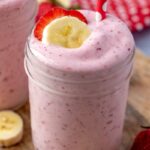Feeling hungry while trying to lose weight? It’s a common struggle. The key to successful weight loss isn’t just about cutting calories; it’s about choosing the right foods that make you feel full and satisfied on fewer calories. This concept, known as energy density, can be a game-changer in your weight management journey.
Diets that focus on energy density, like the Mayo Clinic Diet, aim to help you lose weight and keep it off by prioritizing foods that provide volume and satiety without excessive calories. Let’s explore how you can leverage energy density to your advantage.
Understanding Energy Density for Weight Loss
High Energy Density vs. Low Energy Density Explained
Energy density refers to the number of calories present in a specific quantity of food. Foods with high energy density pack a lot of calories into a small serving, while low-energy-dense foods offer fewer calories in a larger portion.
For example, consider the difference between raisins and grapes. A cup of raisins contains approximately 480 calories, whereas a cup of grapes only has around 104 calories. Choosing grapes over raisins allows you to eat a larger volume of food while consuming fewer calories.
The Three Pillars of Energy Density
Three key factors determine a food’s energy density:
- Water Content: Fruits and vegetables are naturally high in water. This high water content adds volume and weight to the food without adding significant calories. For instance, grapefruit is about 90% water, with half a grapefruit containing only 64 calories. Similarly, raw carrots are around 88% water, and a medium-sized carrot has just 25 calories.
- Fiber Content: Fiber-rich foods contribute to feelings of fullness because they take longer to digest. They also add bulk to your meals without increasing calorie intake. Vegetables, fruits, and whole grains are excellent sources of fiber. Air-popped popcorn is a perfect example of a high-volume, low-calorie whole grain. One cup contains approximately 30 calories.
- Fat Content: Fat is very energy-dense, meaning it contains a lot of calories per gram. Foods naturally high in fat, like certain meats, or foods with added fats, like fried foods, are higher in calories compared to their leaner or lower-fat alternatives.
Applying Energy Density to Your Diet
Incorporating the concept of energy density into your eating plan can seem daunting at first, but focusing on simple swaps and adjustments can make a big difference. Let’s examine each food group in the Mayo Clinic Healthy Weight Pyramid and see how energy density applies.
Vegetables
Most vegetables are naturally low in calories and high in volume. Their water and fiber content contributes to satiety without adding extra calories. Some great examples include:
- Salad greens
- Asparagus
- Carrots
- Tomatoes
- Broccoli
- Zucchini
Instead of heavy meat or cheese sauces, top your pasta with sautéed vegetables. Reduce the meat portion on your plate and increase the vegetable serving. Add vegetables to your sandwiches and enjoy raw vegetables as snacks.
Fruits
Most fruits are great additions to a healthy diet. Whole, fresh, frozen, or canned fruits without syrup are excellent low-calorie choices. In contrast, fruit juices and dried fruits are more concentrated sources of natural sugars, giving them a higher energy density. They also don’t provide the same level of fullness as whole fruits.
Try adding blueberries to your breakfast cereal or mango or peach slices to whole-wheat toast with a little peanut butter. Toss mandarin orange and peach slices into a salad. Keep a bowl of whole fruit in plain sight or in the fridge to encourage snacking on these nutritious options.
Carbohydrates
Many carbohydrates come from grains, like cereal, rice, bread, and pasta. Whole grains are the superior choice because of their higher fiber content and essential nutrients.
Opt for whole-grain bread, whole-wheat pasta, oatmeal, brown rice, and whole-grain cereal instead of refined grains or foods made with sugar or white flour. Because many carbohydrates are higher in energy density, it’s essential to be mindful of portion sizes.
Protein and Dairy
Protein and dairy foods come from both plant and animal sources. The best low-energy-dense choices are high in protein but low in fat and calories. Consider including:
- Beans, peas, and lentils, which are also excellent sources of fiber
- Fish
- Lean meat and poultry
- Low-fat or fat-free dairy products like milk, yogurt, and cheese
- Egg whites
Fats
While fats are high in energy density, some fats are healthier than others. Incorporate small quantities of healthy monounsaturated and polyunsaturated fats into your diet. Nuts, seeds, and oils like olive, flaxseed, and safflower oils contain healthy fats. Limit your intake of saturated and trans fats found in butter or shortening.
Sweets
Like fats, sweets tend to be high in energy density. Good options for sweets are low in added fats and contain healthy ingredients like fruits, whole grains, and low-fat dairy. Examples include fresh fruit topped with low-fat yogurt, a cookie made with whole-wheat flour, or a small amount of dark chocolate.
The key to enjoying sweets while managing your weight is to keep the serving size small and prioritize healthy ingredients. Even a small piece of dark chocolate can fit into a weight-loss plan.
Making Energy Density Work for You
Embracing the concept of energy density means you don’t have to feel hungry or deprived while trying to lose weight. By incorporating plenty of fresh fruits, vegetables, and whole grains into your diet, you can feel full and satisfied on fewer calories. You might even have room for an occasional sweet treat. Focus on making smart choices that prioritize volume and nutrition, and you’ll be well on your way to achieving your weight loss goals.

